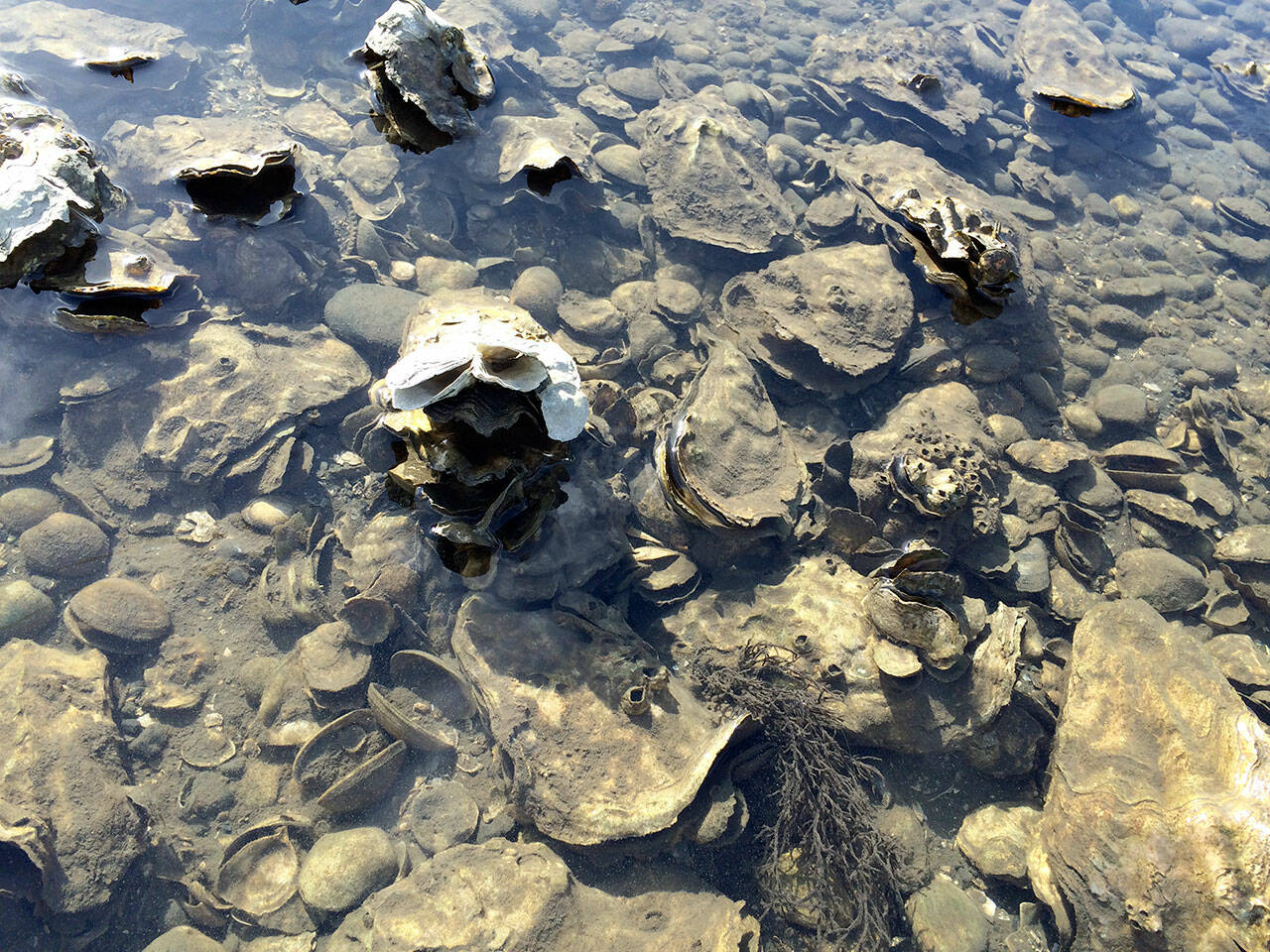THESE ARE THE days we’ve waited for all winter — the daylight low tides. You can dig razor clams in the night tides, but the danger of a freak wave washing you out to sea in the dark is always a possibility. Been there, done that.
Daylight tides are safer and, like the old timers said, “When the tide is out, the table is set.”
Remember to get your new clam license, the one they print with disappearing ink.
Remember what a retired clam cop buddy said, “There is no disappearing ink on your ticket.”
There are any number of ways to get a ticket digging clams. There are various aggregate, weight, minimum size and possession limits for razor, littleneck, butter and horse clams. In addition, you must fill in the holes you dug to get these clams. You must shuck the oysters on the beach and leave the shells to propagate another harvest.
But what if you eradicate the shellfish on an entire beach? Apparently, that’s OK. Then you can get millions of dollars and call it salmon restoration. This is how it’s done.
Back in 1792, when British Captain George Vancouver anchored and named Discovery Bay after his ship Discovery, naturalist Archibald Menzies described the small oysters that covered the bay’s bottom. These Olympia oysters along with the littleneck, butter and horse clams were all part of an ecosystem famous for its jumbo Dungeness crab, prawns, scallops, halibut and cod lurking beneath massive balls of bait fish being chased by schools of salmon that were stalked by seals and sea lions — all prey to the orca.
By the 19th century, industrialization of the Salish Sea threatened to endanger these marine resources. In 1900, the federal government declared Discovery Bay a Shellfish Preserve for Olympia oysters to be used to propagate other areas. For the next century, Discovery Bay was used as a dumping ground for sawmills, a railroad and post-war military shipping.
In 2003, the Salmon Recovery Act created Regional Fisheries Enhancement Groups in an attempt to save our salmon. In 2008, a $12 million salmon restoration project began removing 50,000 cubic feet of sawdust at the head of Discovery Bay. Sawdust is a toxic waste that produces sulphuric acid, metals and anaerobic black muck when deteriorating in alternating salt and fresh water with the tides.
As the sawdust was being dredged with no containment efforts, die-offs of fish, shellfish, marine mammals and even Rhinoceros Auklets on the Federal Bird Refuge on Protection Island were observed. The pollution was ignored in hopes it would go away. It did not.
In 2011, an oyster farmer on Discovery Bay claimed his oysters were killed by the same toxins coming out of the Restoration Project. By 2015, all of his oysters were dead. The oyster farmer sued the Washington Department of Fish and Wildlife, which said the cause was his own incompetence.
The case went to a jury trial in Jefferson County Superior Court that culminated last week in a verdict that said WDFW trespassed when its dredging operation, conducted with none of the required sediment containment measures, released contaminated sediments into Discovery Bay, causing the destruction of the oyster farmer’s business.
The jury did not, however, find WDFW guilty of “gross negligence.”
It’s a typical slap on the wrist to a major polluter masquerading as a state agency entrusted with the care of our natural resources.
They make the rules. Dig too many clams, you’ll get a ticket. Kill every clam on the beach and you get millions of salmon restoration grant dollars.
It’s the way it is.
_________
Pat Neal is a Hoh River fishing and rafting guide and “wilderness gossip columnist” whose column appears here every Wednesday.
He can be reached at 360-683-9867 or by email via patnealproductions@gmail.com.

